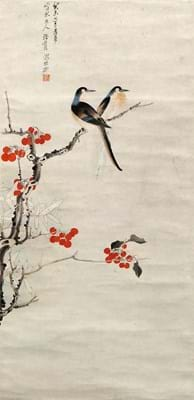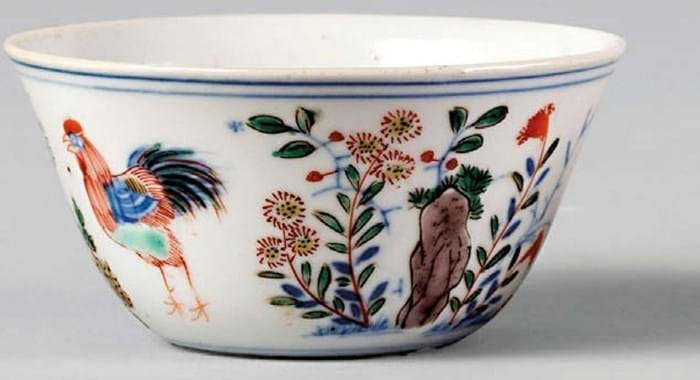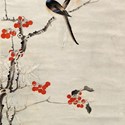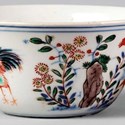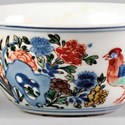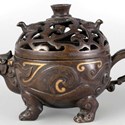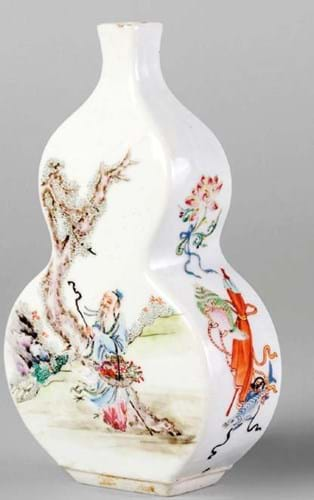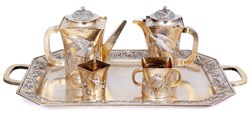It was the best auction in the category so far at the West Norwood rooms with the 487 lots totalling just shy of £670,000.
Bill Forrest, specialist and auctioneer, was delighted but added a caveat. “These specialist auctions are a testament to the enduring strength of the Asian market,” he said. “But there is no doubt that buyers are increasingly seeking those objects with superb provenance and of fine quality.”
Two private collections of scroll paintings – “a highly specialist field due to the number of imitations on the market,” said Forrest – had the requisite provenances and provided the day’s highlights. Most were contested by two Chinese collector-dealers but an Italian bidder took two of the prizes. He went way beyond estimates to take two ink and watercolour scrolls.
One, a 19in x 4ft 5in (49cm x 1.34m) misty landscape in the manner of Shi Tao (1642-1707) with an inscribed poem by the Song dynasty poet Guo Xiangzheng, took £20,000 against an estimate of £1000-1500.
The other was a 10½in x 8ft 4in (27cm x 2.55m) scroll catalogued as manner of Wen Conchgang (fl.1593-1617) and titled Figures reading and studying in an Autumn Forest.
Bearing the artist’s seal and signature, it made £18,000 against a £2000-4000 estimate.
The star lot, however, was an ink and colour painting attributed to the 20th century master Xie Zhilieu (1910-97). This 2ft 3in x 13in (70 x 34cm) image of two birds on a blossoming branch inscribed as a gift for a lady was clearly a declaration of love. Estimated at £2000-3000, it sold to a Chinese collector at £55,000.
Price ranges
As ever in Chinese sales, there was much here for collectors on more limited budgets as well as a number of offerings which soared beyond estimates.
Among the high-fliers among the porcelain were two offerings with blue six-character Chenghua marks but considered later.
One was a 6¼in (16cm) high Kangxi (1661-1722) brushpot decorated in underglaze blue with panels of figures in a garden. It went to a London-based Chinese bidder in the room at a quadruple-estimate £17,000.
The other was two doucai ‘chicken cups’ which attracted huge interest. If there is one thing UK auctioneers have learnt about the Chinese market (other than ensuring bidders will cough up with the cash), it is that it is always better to err on the cautious side when cataloguing and leave it to sometimes demanding bidders to decide on value.
These 1½in (3.7cm) tall cups were listed as late Qing or Republic and estimated at £400-500, but enough bidders thought them earlier than catalogued. They went at £42,000.
Vase soars above estimate
Bidders were also at odds about the double-gourd shaped vase illustrated above, broadly catalogued as 18th century. Standing 5½in (14cm) high, it was finely painted with auspicious symbols of Cai Shen, god of prosperity, a boy with a jar issuing five bats, the immortal dragon Shoulao and eight Buddhist emblems.
From a private London collection and with only two tiny chips to the rim glaze, it was estimated at £800-1200 but a number of specialists in the room apparently thought of greater age and value and it sold at £35,000. The buyer was a London-based dealer, believed to be acting as an agent.
Forrest sees buyers becoming “ever more selective, because there is a lot of jade on the market”. An 18th-19th century brush rest came close to satisfying current demand for quality and provenance. Carved as a dancer resting on a table with scroll and lion mask supports, the 5½in (14cm) mottled pale green piece had a collecting history dating back to 1875. It sold on the lower estimate at £8000 to a Chinese buyer.
It remains a contentious subject, but there was no doubting the age of an 18in (46cm) long rhino-horn carving of a boat with 11 figures and two perched eagles, all on a fitted hardwood wave-form base.
The eye-catching form is not uncommon, and there were some losses to this example, but it came with a provenance to a British missionary in the Nagar District, now in Pakistan close to the Chinese border, in c.1885.
Estimated at £10,000-20,000, it sold to a London-based Chinese bidder at £28,000.
“With the rarity of early Chinese metalware, collectors enjoy the challenge of finding genuine pieces,” said Forrest.
He singled out the performance of a gold and silver-inlaid bronze censer illustrated on this page. The 5in (13cm) high work modelled as a mythical beast was catalogued as a 17th-18th century work in the Warring States style and estimated at £600-1200. After phone and online bidding it sold at £16,000 online.


